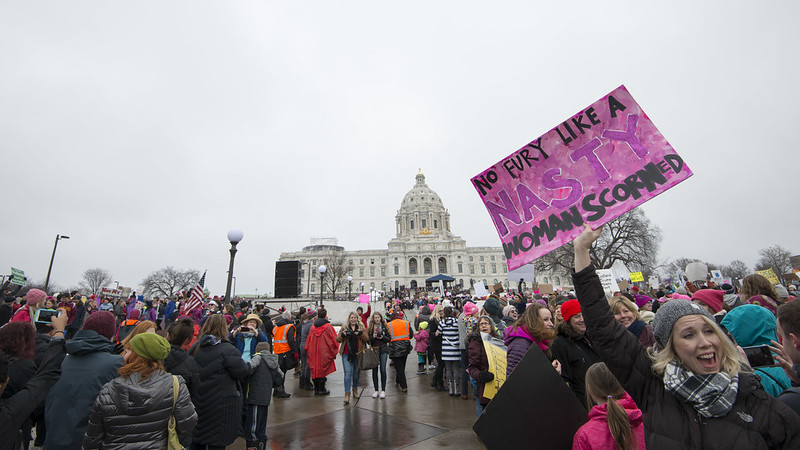“Electability” has become perhaps the most discussed term in all of U.S. politics, and it’s a focal point of the 2020 presidential race. Pundits, pollsters and journalists continue debating who is electable and why.
Yet even though the ability to win is a very simple concept that can be measured by a number of tangible metrics—like a candidate’s track record in previous races, a candidate’s ability to fundraise, enthusiasm for the campaign and media attention—what we have witnessed time and again is the usage of “electability” to reference gut feelings about a candidate instead.
These conversations inevitably, and unfairly, put women candidates and people of color running for office at a disadvantage.

A recent study by MIT’s Department of Political Science links this concept with “strategic discrimination,” an individual’s inclination to discriminate against a candidate out of concern that others will object to them. These intangible, concocted guesses of what others will think frequently informs pundits’ assertions that a candidate has an “electability problem.” What’s more, these gut-based pronouncements are often made in the early stages of campaigns, setting up a false narrative that a female candidate can’t win.
Having to overcome these baseless narratives that attempt to keep women out has been the experience of women running for office for far too long.
The 2018 midterms are the perfect case study: Just look at headlines leading up to the elections—“For Female Candidates, Harassment and Threats Come Every Day;” “2018 the Year of the Woman? Not so fast” and “CBS News pollster reveals why ‘blue wave’ is unlikely”—and you’ll see how this narrative of doubt permeated a record-breaking year of women running for office. Meanwhile, the numbers-based news stories that emerged after the elections—”Women And People Of Color Were Elected At Same Rate As White Men In 2018” and “Faced with ‘Electability’ Question in 2020, Women Point to 2018 Wins“—showed that those naysaying headlines weren’t just a disservice to women, but were also completely off the mark.
The cold hard facts show that women aren’t just electable—they’re empirically more electable than their male counterparts.
The Reflective Democracy Campaign found that in 2018 women of color comprised 4 percent of candidates and 5 percent of all winners, white women made up 28 percent of candidates and 29 percent of all winners, men of color were 6 percent of candidates and 7 percent of all winners and white men represented 61 percent of candidates and 60 percent of all winners.
Women proved their electability all across the country, with Democratic women in particular playing an instrumental role in 2018’s historic wins. Emerge-trained women flipped state senates in Colorado, Connecticut and Maine, wrested four seats in the U.S. House of Representatives from GOP incumbents and ended Republican supermajorities in the state senates in Michigan and Pennsylvania. Victories by women of color led to the most diverse Congress in history—and two of the country’s largest cities, Chicago and San Francisco, elected Black women as mayors for the very first time. Women also won statewide executive positions, becoming governors and secretaries of state in conservative strongholds like Kansas and Arizona. And, marking a truly awe-inspiring tipping point for women’s political power, the people of Nevada elected the first-ever majority-woman state legislature in our nation’s history.
It’s absolutely critical that we share these success stories far and wide—because, despite their proven electability, women candidates are still met with relentless messaging that tells them they can’t win.
After the 2016 election, political pundits quickly and conveniently settled on Hillary Clinton’s gender—inextricably tied to her “likability,” and thus, her “electability”—as a fundamental vulnerability in her candidacy, and the deciding factor in her loss. This simplistic conclusion, too often accepted as established fact, wholly disregards Clinton’s popular vote win by 2.87 million votes and that a foreign enemy was deeply engaged in covert tactics against her and our democracy.
Nearly three years later, pundits continue to ignore the reality of Clinton’s popular victory, asking that same old tired question: “can a woman win?” The answer is yes, and we have to keep repeating it.
Yes, a woman can win, because the facts show that she can win. Yes, a woman can win, because she has the talent to win. Yes, a woman can win, and we need to tell these stories and share this truth so that women will keep running. The paramount lesson of 2018 is that we need more women to run, because they can win. This is precisely why representation matters, and why it’s so exciting to have multiple women vying for the Democratic Party’s presidential nomination. It means that the likelihood of one of them securing the nomination dramatically increases.
With a new generation of voters entering the political arena, we have the chance to set the record straight on electability. It should not be a gut feeling that leaves room for unconscious bias. It’s time pundits study the tangible, strategic ways candidates are connecting with voters. New voters deserve to inform their decisions with real data, and we have real metrics to use to back the notion of electability.
Maybe after two historic elections for women, we can finally change the harmful and outdated narrative that women have an “electability problem” and replace it with today’s reality—when women run, women win.





